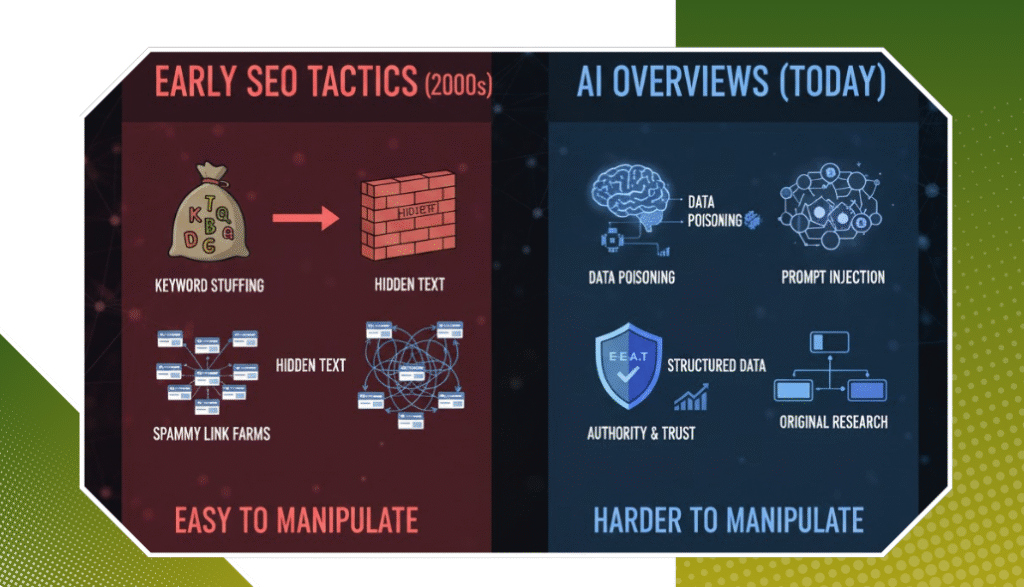You might be wondering, “Why is this happening more often?”. As Google gets better at delivering instant answers, users expect faster, no-fuss results. For businesses and bloggers, this shift means rethinking SEO strategies to stay visible. In this post, we’ll break down why zero-click searches are growing and how you can still get your content noticed, even if users don’t click.
Understanding Google Zero-Click Search
A Google zero-click search occurs when the query is fully answered on the SERP itself without requiring the user to click any external link. Google presents the result directly through elements like answer cards, so visitors often get the information they need without navigating further.
How Google Delivers Answers Directly on the SERP
Google zero-click search results are generated using structured data, content indexing, and AI models that identify relevant information. Instead of directing users to external pages, the search engine presents summaries or direct answers through various SERP elements.
Zero-Click Search Features:
Here are the common elements Google uses to display zero-click search results directly on the results page:
- Featured Snippets: Short sections of text or lists pulled from websites that directly answer a query.
- Knowledge Panels: Summaries about entities (such as companies or people) sourced from structured databases and authority sites.
- People Also Ask (PAA): Related questions shown with dropdown answers extracted from indexed pages.
- Local Packs: Maps and listings of nearby businesses’ information, including contact information, reviews, and hours.
- AI Overviews: Multi-source, AI-generated summaries that combine content across sites.
- Direct Answers: Instant facts for queries like “What time is it?” or “What is 2+2?”
- Featured snippets: Highlighted text boxes with concise answers extracted from web pages.
Formats are designed to deliver relevant content immediately, removing the need for users to engage with individual websites.
Reasons Behind the Growth of Google Zero-Click Search
Several technical and behavioural trends are powering the rise of Google zero-click search and the resulting increase in zero-click traffic:
Google’s Instant-Answer Prioritisation
Google now emphasises delivering direct answers on the SERP through features like featured snippets, knowledge panels, People Also Ask (PAA), and AI Overviews. As Google improves its ability to parse and present structured data, the platform reduces the need for users to click through for basic information.
AI and Natural Language Processing Enhancements
Advancements in machine learning and natural language processing (NLP) enable Google to generate more comprehensive summaries directly on the search results page. This capability shifts user behaviour toward discovering more answers without visiting websites.
Mobile and Voice Search Shift
With mobile usage dominant and voice search growing, users increasingly expect fast, one-step answers. These formats—short, conversational responses—are best served directly in the SERP, leading to more zero-click sessions.
Rich SERP Elements Reduce Clicks
Google’s rich results features, such as local packs and video previews, keep users on the page and provide extensive information at a glance. This “click redistribution” significantly lowers organic click-through rates.
The rise in zero-click searches comes down to Google getting better at answering questions right on the results page. Additionally, the way people search is changing, especially on mobile devices and with voice commands. With all the extra features like snippets and local results, there’s just less reason to click through to another site.
Strategies to Drive Growth with Google Zero-Click Searches
Explore ways to format your content, apply structured data, and create targeted answers that increase the likelihood of appearing in zero-click features on Google.
- Optimise for SERP Features
Use precise formatting, short headings, bullet lists, tables, and definitions to target featured snippets and knowledge panels, and apply relevant schema markup.
- Provide Direct Answers Early
Place concise responses (40–60 words) at the beginning of sections that align with user queries. Ensure your content is semantically structured to match search intent.
- Enhance Technical SEO and Page Performance
Ensure fast load times, responsive layouts, and optimised images. Mobile optimisation is critical, as most zero-click traffic occurs on mobile devices.
- Optimise Local Presence
For businesses with physical locations, fully populate your Google Business Profile and use the LocalBusiness schema to capture visibility in local packs.
- Maintain Content Freshness
Regularly update high-performing pages to retain or regain featured snippet positions. Even minor revisions—such as new statistics or improved formatting—can impact the selection.
Conclusion
Zero-click searches are here to stay, and Google’s getting faster at giving answers without the need to click. But that doesn’t mean your website has to disappear. Now you should be tweaking your content to match how people search and making sure Google can easily grab your answers. This way, you can still stay in the game. Adapt, optimise, and keep your content sharp!
At Rankingeek Marketing Agency, we help businesses adapt to the changes of zero-click searches. Our team helps structure your content for featured snippets, implements schema markup, and enhances technical SEO. Our SEO experts implement methods to improve your visibility in search results, enabling brands to maintain traffic even when users don’t click through your websites. Contact Us Today!




